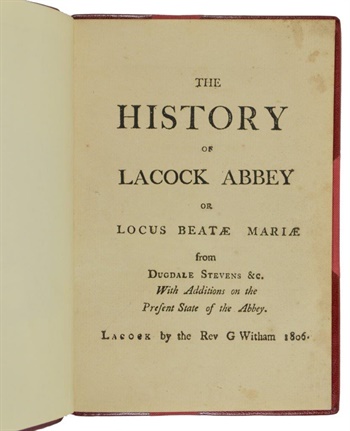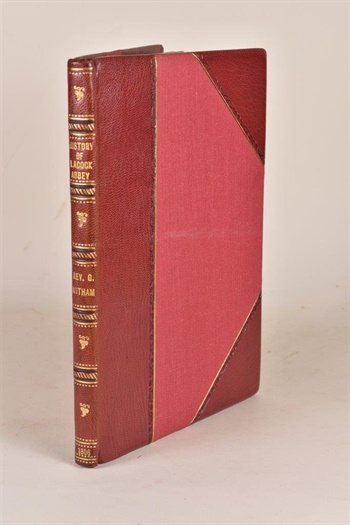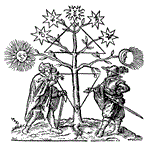Book Details
WILTSHIRE. WITHAM (Rev. George) Editor and printer.. The History of Lacock Abbey or Locus Beatae Mariae from Dugdale Stevens &c. With Additions on the Present State of the Abbey.1806
Lacock by the Rev G. Witham, First edition, small 4to (188 x 126 mm), [4], v, [1], 44pp., recent red half morocco, spine gilt. The History of Lacock Abbey, also known as Locus Beatae Mariae, is a book written by George Witham in 1806. The book provides a comprehensive account of the history of Lacock Abbey, a medieval nunnery located in Wiltshire, England. Witham explores the origins of the abbey, its founding by Ela, Countess of Salisbury, and its subsequent history under different abbesses. The book also covers the dissolution of the monasteries under Henry VIII and the subsequent use of the abbey as a private residence. Witham provides detailed descriptions of the architecture and layout of the abbey, as well as the daily life of the nuns who lived there. An extremely rare book which was privately printed by the Rev. George Witham at his press at Lacock. The text is mostly taken from Dugdale and Stevens with a few additions by the printer. In his dedication to the Countess Dowager of Shrewsbury he mentions, "the vacant Hours pleasingly employed in preparing and printing the Work, (my first Performance)". A footnote by J. G. Nichols in his Annals and Antiquities of Lacock Abbey, 1835, on p.349 states: "a literary curiosity of great rarity". The Rev. George Witham was chaplain to the Countess of Shrewsbury at Lacock Abbey at it seems this is the only book to have been printed by him at Lacock. Lacock Abbey, also known as Locus Beatae Mariae, has a rich and varied history spanning over 800 years. Founded in the early 13th century by Ela, Countess of Salisbury, it originally served as a nunnery for Augustinian canonesses. The abbey was dedicated to St. Mary and was a place of religious devotion and community life. During the Protestant Reformation in the 16th century, Lacock Abbey was dissolved and transformed into a private residence. It was acquired by Sir William Sharington, who converted it into a Tudor family home1. The abbey continued to evolve with each subsequent owner, reflecting the architectural and cultural changes of the times. One of the most notable events in its history occurred in 1835 when William Henry Fox Talbot, a pioneer of photography, captured the first photographic negative at Lacock Abbey. This groundbreaking achievement marked the abbey as a significant site in the history of photography. Provenance: From the library of Josceline Grove, with bookplate and their typed catalogue description pasted to front endpapers. Listed by Harris in his Country House Index; Not in Holmes or Cooper.
Stock #41502



